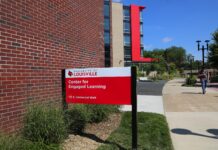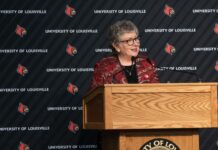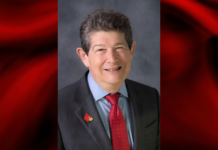The presentation also was streamed live online.
Fiscal year 2014 will see flat funding from the state, Ramsey said. The university has built its budget proposal based on these funding sources and amounts:
- $2 million from the downtown tax increment finance district
- 3 percent increase for resident and non-resident undergraduate tuition based on an expectation that the Council on Postsecondary Education will set that percentage this week and an increase in 100 new full-time freshmen
- $750,000 in savings from revised procurement procedures
- $2.75 million from the voluntary separation program and
- $500,000 from lapsed fringe benefits on unfilled positions (units will not lose the funding for those positions)
The proposal also includes these expenditures, he said:
- 4 percent salary increase pool
- 3 percent increase in financial aid to match the undergraduate tuition increase
- 5 to 10 percent increase in the university’s portion of employee health insurance based on actuarial projection
- 5 percent ATB utilities increase
- $300,000 retirement increase
Other expenditures include debt service per amortization schedule, FICA increase, modest strategic initiatives and continued work to address structural budget problems related to implementation of PeopleSoft and maintenance and operation costs of buildings which the state did not provide when it authorized construction of the buildings.
Ramsey will take the proposal to the Finance Committee of the Board of Trustees at its May meeting. The proposed budget will go to the full Board of Trustees for consideration in June.
The budget process starts each fall. Ramsey’s presentation is an annual event and a regular part of the process in which he seeks campus input through the Faculty and Staff senates and the Student Government Association, the commissions on the Status of Women and Diversity and Racial Equality, the Budget Advisory Committee, the Tuition and Fee Committee and other groups.


























